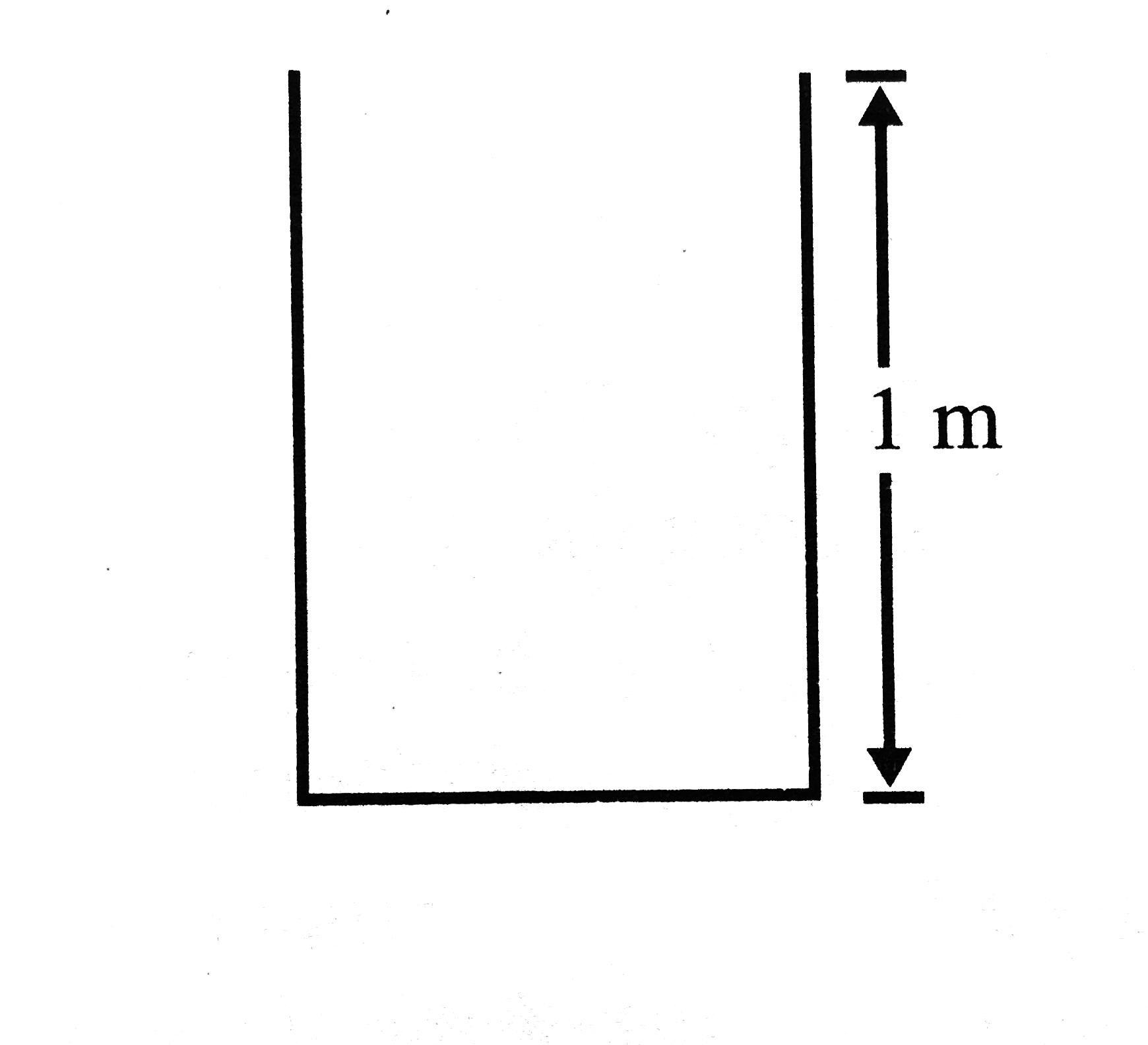If the velocity of sound in air is 320m/s, then the maximum and minimum length of a pipe closed at one end , that would produce a just audible sound would be
2.6m and 3.6mm
4m and 4.2mm
3mand3mm
4mand4mm
The correct Answer is:D
To solve the problem of finding the maximum and minimum lengths of a pipe closed at one end that would produce a just audible sound, we can follow these steps:
Step 1: Understand the relationship between frequency, velocity, and length of the pipe
For a pipe closed at one end, the frequency of the sound produced is given by the formula:
f=V4L(2N−1)
where:
- f = frequency of the sound,
- V = velocity of sound in air (given as 320m/s),
- L = length of the pipe,
- N = harmonic number (1, 2, 3,...).
Step 2: Identify the audible frequency range
The audible frequency range for humans is from 20Hz to 20kHz.
- For maximum length, we will use the minimum frequency fmin=20Hz.
- For minimum length, we will use the maximum frequency fmax=20kHz=20×103Hz.
Step 3: Calculate the maximum length of the pipe
Using the minimum frequency fmin=20Hz:
20=3204Lmax(2×1−1)
This simplifies to:
20=3204Lmax
Rearranging gives:
4Lmax=32020
4Lmax=16
Lmax=164=4m
Step 4: Calculate the minimum length of the pipe
Using the maximum frequency fmax=20×103Hz:
20×103=3204Lmin(2×1−1)
This simplifies to:
20×103=3204Lmin
Rearranging gives:
4Lmin=32020×103
4Lmin=32020000=0.016
Lmin=0.0164=0.004m=4mm
Final Answer
- Maximum length Lmax=4m
- Minimum length Lmin=4mm
For a pipe closed at one end, the frequency of the sound produced is given by the formula:
f=V4L(2N−1)
where:
- f = frequency of the sound,
- V = velocity of sound in air (given as 320m/s),
- L = length of the pipe,
- N = harmonic number (1, 2, 3,...).
The audible frequency range for humans is from 20Hz to 20kHz.
- For maximum length, we will use the minimum frequency fmin=20Hz.
- For minimum length, we will use the maximum frequency fmax=20kHz=20×103Hz.
Using the minimum frequency fmin=20Hz:
20=3204Lmax(2×1−1)
This simplifies to:
20=3204Lmax
Rearranging gives:
4Lmax=32020
4Lmax=16
Lmax=164=4m
Using the maximum frequency fmax=20×103Hz:
20×103=3204Lmin(2×1−1)
This simplifies to:
20×103=3204Lmin
Rearranging gives:
4Lmin=32020×103
4Lmin=32020000=0.016
Lmin=0.0164=0.004m=4mm
- Maximum length Lmax=4m
- Minimum length Lmin=4mm
Topper's Solved these Questions
- SUPERPOSITION AND STANDING WAVESBOOK - CENGAGE PHYSICS ENGLISHCHAPTER - SUPERPOSITION AND STANDING WAVESEXERCISE - Multiple
26 Videos
- SUPERPOSITION AND STANDING WAVESBOOK - CENGAGE PHYSICS ENGLISHCHAPTER - SUPERPOSITION AND STANDING WAVESEXERCISE - Assertion - Reasoning
6 Videos
- SUPERPOSITION AND STANDING WAVESBOOK - CENGAGE PHYSICS ENGLISHCHAPTER - SUPERPOSITION AND STANDING WAVESEXERCISE - Subjective
24 Videos
- SOUND WAVES AND DOPPLER EFFECTBOOK - CENGAGE PHYSICS ENGLISHCHAPTER - SOUND WAVES AND DOPPLER EFFECTEXERCISE - Integer
16 Videos
- THERMODYNAMICSBOOK - CENGAGE PHYSICS ENGLISHCHAPTER - THERMODYNAMICSEXERCISE - 24
1 Videos
Similar Questions
Knowledge Check
velocity of sound in air is 320 m/s. A pipe closed at one end has a length of 1 m. Neglecting end corrections, the air column in the pipe can resonates for sound of frequency
A80 HzB240 HzC320 HzD400 Hz
If the velocity of sound in air is 336 m/s. The maximum length of a closed pipe that would produce a just audible sound will be
View SolutionVelocity of sound in air is 320 m/s. For an organ pipe closed at one end of length 2 m the resonating frequency may be
View SolutionThe velocity of sound in air is 340ms. If the density of air is increased to 4 times, the new velocity of sound will be
View SolutionVelocity of secnod in air is 320 m/s. Neglecting end correctionss, the air column in the pipe can resonate for sound of frequency
View SolutionVelocity of sound in air is 320m/s. The resonant pipe shown in Fig. 7.81 cannot vibrate with a sound of frequency .

View SolutionAn open pipe is 85 cm long. If the velocity of sound is 340 ms−1, find the frequency of the fundamental note of the pipe. What would be the length of a closed pipe which produces a fundamental note of the same frequency?
View SolutionA tube of a certain diameter and of length 48cm is open at both ends. Its fundamental frequency is found to be 320Hz. The velocity of sound in air is 320m/sec. Estimate the diameter of the tube.
One end of the tube is now closed. Calculate the lowest frequency of resonance for the tube.
View Solution
